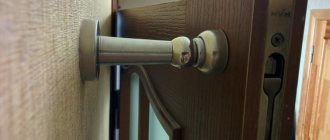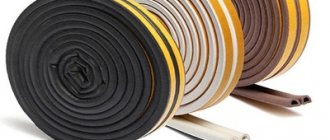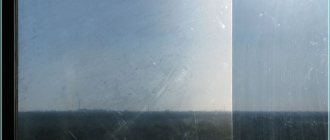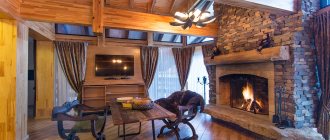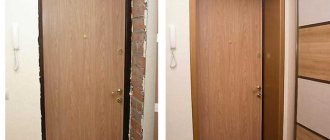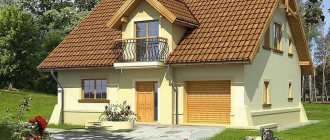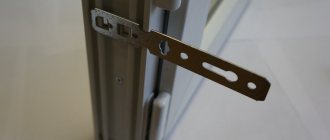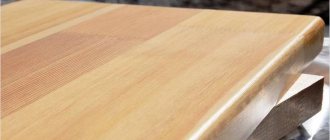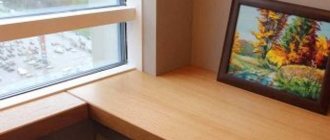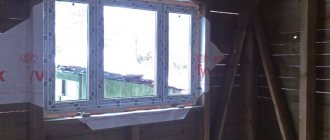The last stage in repairing a balcony is its finishing. What material has a neat aesthetic appearance, ease of installation and an affordable price? That's right - these are plastic panels.
To decorate a balcony with PVC panels, there is no need to call a specialist, because thanks to the step-by-step instructions in this article, anyone without special repair skills can handle the finishing, and in addition, there is an opportunity to save money.
Advantages and possible disadvantages
Of course, in addition to the positive aspects, as with any material, there are disadvantages.
Undeniable advantages:
- Easy installation. It’s easy to finish finishing your balcony with plastic panels yourself, following our photos (visual instructions). The panels themselves are connected using the tongue-and-groove method; no special skills are required (except to use a screwdriver).
- Long service life. Manufacturers claim a service life of 25 years. PVC panels are an unattractive breeding ground for microorganisms, therefore, unlike wood and other materials, they are not subject to decomposition.
- Design. These are two waterproof surfaces connected by perpendicular partitions. They, in turn, form air cells. This structure provides increased sound and heat insulation. PVC is not installed close to the wall, but on the sheathing. That is, there is an air gap between the wall and the plastic and there is minimal play at the joints, which allows air to circulate and prevents the appearance of mold.
- Variety of textures and colors. You can choose the covering to suit any balcony interior.
- Light weight.
Obvious disadvantages include:
- Instability to mechanical stress.
- Toxicity. In the event of a fire, toxic substances are released that are harmful to health. It is for this reason that plastic is not recommended for a nursery, kitchen, living room, but in a dressing room, bathroom, corridor or balcony such cladding would be quite appropriate. When purchasing, it would be a good idea to ask the seller to present an environmental safety certificate. Low-quality plastic can release toxic substances even without any heating (you may have noticed the smell in new, renovated rooms). You shouldn’t think that everything will disappear; most likely, volatile polyphenols will continue to enter the air, and this is not very good for the health of residents.
- Budgeting. One of the main advantages can also be considered as a disadvantage. Many people perceive plastic as something very cheap, and it is no longer used for repairs slightly above average. But here, as in the saying, you need to stretch your legs over the blanket.
What to buy from accessories?
Unfortunately, plastic panels alone will not be enough to decorate a balcony with PVC panels. To successfully complete the repair, it is necessary to provide a number of necessary elements:
- External corner;
- Internal type corner;
- Profile F;
- Start profile;
- Ceiling plinth;
- Profile for docking;
- Skirting for the floor.
What types of plastic panels are there?
PVC panels vary in length, thickness and width. Length can be:
- 2600 mm
- 2700 mm
- 3000 mm
- 6000 mm
The width varies from 150 to 500 mm.
Thickness - from 6 to 10 mm. The thicker the plastic product, the stronger it is. For the balcony ceiling, you can choose 6 mm PVC, since it does not require great strength, because it is not subject to mechanical stress.
Photos of loggias, the finishing of which is made with plastic panels
We bring to your attention photos of balconies and loggias, where the main finishing element is a PVC panel:
The interior decoration of the balcony with plastic panels can be combined with other materials, for example, as in this photo - wood-look plastic panels are combined with decorative brick:
An interesting version of a selection of photos of a two-color solution for cladding with PVC panels, where the walls of the balcony echo the furniture:
Finishing with PVC panels is suitable not only for balconies, but also for loggias, as can be seen in the photo, the shape of the room is not a problem for such cladding.
Choosing a balcony style
Like any other room, a loggia or balcony can be decorated in one of the popular interior styles.
Modern
A balcony in a modern style is usually decorated in soothing colors and simple shapes.
Loft
The loft style is characterized by minimalism and pristine materials. The photo above shows a balcony with brick and plaster walls. Glass, metal and plastic were also used in the interior. The loft style does not tolerate unnecessary decorations, everything is raw and textured.
Eco
To recreate eco-style on your balcony, use only natural, environmentally friendly materials. Install wooden furniture as shown in the photo above. Decorative pillows and blankets should be made of cotton or linen.
Country
For a country-style balcony, use wooden or wicker furniture. Small metal basins can be used as plant pots. Hang imitation street lights on the walls. Keep it simple but elegant.
High tech
The interior of a high-tech balcony is characterized by a certain minimalism. Furniture and decorative elements are made of materials such as metal and leather. Shades of white, beige and gray are used.
Design features and choice of PVC panels
The undoubted advantage of plastic is the variety of design solutions. These are no longer just boring white surfaces, but quite interesting design variations that can imitate the pattern of wood, stone, marble (the photo below shows fashionable textures).
Colored
The surface can also be:
- matte,
- shiny (glossy),
- moderately glossy.
Manufacturers have learned to add texture to the front side. That is, if it is wood, then to the touch you can feel the veins like real material. Polyvinyl chloride is a fairly pliable material, which makes it possible to give PVC any shade and texture. For example, for a bathroom, where we are accustomed to seeing tiles, plastic panels can imitate them with great success.
There are also original ideas from manufacturers, for example, as in the photo below
Here, not just the combination of PVC tones has been thought out, but also the geometry of their location. Interesting compositions with a non-standard diagonal layout of panels, as in this photo
It is almost impossible to guess that these are ordinary PVC panels. They look very decent. This pattern is quite active, so it is better to decorate not the entire balcony this way, but only one wall.
PVC panels with a pattern
A balcony decorated with PVC panels with a pattern will look very interesting (a selection of photos is presented below). The drawing can be applied using different methods:
- varnishing - the applied pattern is coated with varnish to protect it from external factors. Depending on the varnish application method, the surface can be glossy or matte.
- lamination - used for the production of textured items. Instead of varnish, a thin film is used here; it is this that adds texture to the image.
Both options are shown in the photo, the difference is obvious.
If you decide to arrange a relaxation room with a table for drinking tea on your balcony, then in construction stores you can find copies that are suitable for the design, for example, as in the selection of photos below:
We are used to seeing similar designs on expensive tiles or paper wallpaper, and such a design of PVC panels will be a revelation for many. Another interesting option is a pseudo window. If your balcony has small windows and the landscape leaves much to be desired, then you can add a window in the form of a picture (see photo)
It is better to place such a false window with a view of Italy (or at your discretion) on the far wall. The drawing will undoubtedly attract the eye, so you need to think through the entire layout and furnishings of the balcony in advance so that everything looks organic.
PVC panels do not try to disrupt our usual worldview, therefore the design of this facing material is thought out and implemented taking into account the prevailing tastes of the consumer. For example, a large assortment of panels is made in the likeness of wallpaper - a repeating floral or abstract pattern is enhanced by texture with the addition of gloss and matte in different areas of the pattern. Thanks to this design, the balcony will not be perceived as a plastic box. But this is exactly what most people fear when it comes to plastic as cladding.
When choosing panels, the same rule applies as with wallpaper - you need to make sure that all packages are from the same batch. Otherwise, you can get products of different shades. At first glance this may not be noticeable, but after veneering the striping will become obvious.
To get a quality product you need:
- reliable modern equipment and accessories
- high quality raw materials
- suitable dough recipe
- proven technology
- absolute compliance with all process modes
If a manufacturer decides to make its products cheaper, then it must change one of several parameters. These changes will affect the quality (obviously, not for the better).
Cheap panels are no different from high-quality ones. But this is only at first glance. There is still a difference. What to pay attention to:
- Stiffening rib. The ribs should be perpendicular. This ensures the strength of the surface, but in a low-quality panel the ribs may not be perpendicular and may also be soft. The difference is clearly demonstrated by the photo:
- Joint. If there is only one socket, then it is not clear what the result will be. Try joining two pieces - you should get a line without gaps.
- Surface. We recommend that you apply a ruler and see if the surface is even, since there are such “jambs” of manufacturers when the sheathing literally goes in waves.
Another difference between low-quality specimens is that the drawing does not hold up well. It can be erased during use when washing plastic. To avoid having to spend money twice on repairs, it is better to pay once for high-quality panels from well-established manufacturing companies.
Loggias and balconies have to be finished much more often than other areas of our home. After all, there are frequent temperature changes, high humidity, exposure to the rays of the sun and a lot of dust. It is not easy to choose a material that can remain in good condition for a long time in such conditions. Many owners decide to “cover” the balcony with PVC panels.
Calculation of the number of panels
Before purchasing, depending on the size of the balcony, the required number of panels is calculated.
When taking measurements, it is worth considering a number of features:
- panels have different widths. For standard finishing of the walls and ceiling of a balcony, panels 25 cm wide are suitable, and for complex wall configurations, narrow panels 10 cm wide are suitable;
- The maximum length of the panels is 6 meters. For finishing standard balconies with plastic, panels 2.5 meters long are suitable.
How measurements are taken:
- To find out the required number of panels for the walls, you need to measure the perimeter. We multiply the perimeter of the balcony by the height of the ceiling and divide the resulting result by the width of the panel. The area of the openings is not excluded as it is better to have a margin for accidental errors;
- Ceiling - the area is measured and divided by the width of the panel.
If the measurement results in a fractional number, then you need to round up to a whole number.
We recommend making a stock of 2-4 panels.
In addition to the panels, finishing elements will be needed.
- Start profile. Installation begins with this element.
- Finish profile. Installation ends with this element.
- External corner. This element is designed for covering walls with a right outer angle.
- Inner corner. This element is designed for covering walls with a right internal angle.
- Connecting profile. Used to extend panels in length.
- Ceiling plinth. Serves to close the joints between the wall and the ceiling.
Finish options
To create PVC sheets, polyvinyl chloride is used - a universal type of plastic that has many advantages. PVC panels are made by rolling. Cladding with plastic panels is easier than with other cladding materials. Many apartment owners prefer to hire specialists for this purpose. Therefore, for them the question “how to sheathe the inside of a balcony with plastic” does not matter, and those who want to do it with their own hands often “rack their brains” on how best to do it. Next we will tell you about this, and using an example you can do it yourself.
PVC panels vary in thickness and size. The thicker the material, the stronger it is. For the ceiling, you can choose thinner sheets, since it is not subject to any loads. For wall cladding, choose the material of greatest thickness and strength. The material may also have differences in color, which provides great opportunities for imagination.
For finishing loggias, plastic panels for balconies are also chosen that have:
- wide palette of colors and textures;
- affordable cost;
- wear resistance;
- endurance to temperature changes;
- resistance to bright sunlight
- not requiring much care.
Option for facing in “Stalin” style. You can decide to turn the balcony into a well-groomed and clean room in which to store things. You need to act in this sequence. First, the balcony is lined with plastic panels. The balcony will look larger if it is carried out along the parapet. Windows are chosen with sashes that slide apart.
An example of finishing loggia P-3. The owners of the apartment in building P-3 did not have large funds, but needed urgent finishing of the loggia. It was very small and rectangular in shape. The finishing was also done with plastic panels. The floor was tiled several shades darker. The room was given functionality with the help of a cabinet built into the side wall. The ceiling was finished with seamless panels.
Using lining
The lining can be either plastic or wood. The main difference between this type of finishing and PVC panels is that the material is more resistant to climatic conditions, as well as the possibility of using it for external or facade cladding.
Wooden and plastic lining often have a similar appearance. When choosing, you need to rely on personal preferences.
Eurolining is equipped with a tongue-and-groove fastening system. This system ensures ease of assembly and a high degree of safety of the material even when wet. Manufacturers have also thought out a system for getting rid of condensate. The reverse side of the lining is equipped with special grooves for ventilation: accumulated water flows down and comes out from under the lining.
The front side of the board can have different designs with unusual colors and reliefs. Manufacturers offer the most popular options:
- with round edges;
- chamfer;
- smooth;
- with a notch.
Wood paneling provides additional ventilation, which allows you to create the most comfortable microclimate in the room.
Natural material often does not require additional improvements, but it is not prohibited to enhance the decor by applying colored enamel, brushing, tinting and patination. To preserve the results of additional work, it is better to apply varnish or primer at the end.
Of course, natural material has a number of disadvantages. The most significant is susceptibility to mold and other fungi. Also, do not forget that wood is a fire hazard. To reduce imperfections to a minimum, you need to treat the cladding with special solutions. Before carrying out work, it is necessary to take care of waterproofing. Only after this should impregnation be applied. It is better to do this in two layers. Upon completion of the work, you must wait until it dries and then putty.
Installing panels with glue
In order to properly attach plastic PVC panels to the balcony using glue, you should take its choice seriously. It is better to give preference to a composition that has:
- viscosity;
- water resistance;
- resistance to sunlight and temperature changes;
- environmental friendliness;
- without a strong persistent odor.
The concrete base must be perfectly level, smooth and the panels can be securely held on it. If there is even the slightest doubt about the quality of the surface, it should be double-checked and prepared. Only after this can you engage in cladding work and choose the PVC panels that are most suitable for the balcony.
First step: Prepare the base
So, we cover the balcony, as we decided, with plastic panels. First, we evaluate the quality condition of the surface. If there are unevenness and damage, you should prepare the wall. To combat unevenness, it is recommended to attach a sheathing.
Second step: Preparing panels before installation
Next you need to give the sheets the required size. It is advisable to degrease the back surface so that the glue contacts the surface as best as possible. To degrease, you can use alcohol, acetone or soapy water.
Third step: Stopping
Proper interior decoration of the loggia with plastic panels requires that the first sheet be installed in the corner of the room. Before this, you need to mount a corner profile on it for connection. If the panel needs to be attached to the ceiling or wall, then the adhesive is applied dotted or dotted to the back of the product. Then the required time is maintained as specified by the manufacturer and pressed to the surface.
If the material is installed to the sheathing, then glue is applied to those places where it will come into contact with it, as well as to the slats. The tenon of one panel is inserted into the groove of the next. After reaching the corner of the loggia, the excess part is carefully cut off. On the cut side, install a corner profile intended for connection, and attach the sheet to the surface.
The last panel must be cut fifteen millimeters shorter than the rest. It should first be inserted into the corner profile, then pressed until it stops. Then press it against the wall and move it to the groove of the next sheet. Now you can wipe the finished cladding from dirt and dust.
How are plastic panels made?
At the first stage, the plastic components are heated and mixed to a uniform viscous state. The temperature does not allow the mass to freeze and harden. The resulting raw material enters an extruder - a machine where PVC samples are pressed under pressure and hot air.
Plastic products are extruded from it through special template heads, which allow the panels to take their usual shape. The panels are cut into long strips, which are no longer than 6 m. Panels that have passed the quality test are painted with special compounds, a pattern is applied using printing, and it is fixed on PVC products with varnishes that are resistant to mechanical damage.
These are the basic processes in plastic manufacturing technology; in fact, manufacturing contains more techniques and stages, but the basic concept is this. The result is two layers of plastic, fastened with longitudinal bridges.
Installation on mounting strips and clamps
To make the loggia look good and be warm, you can install PVC panels on the planks and clamps. You should act in the following sequence:
- mark the planks. To do this, you should use these strips, a marker, a level and a tape measure. Lines are drawn on the hay at a distance of fifty centimeters;
- You need to mark the points on the plank along which it is attached to the wall with dowels and nails. Use a drill to make holes at all marks. The plank is again applied to the wall along the marked lines and the places where the dowels are installed are marked;
- the bar is removed from the wall, holes are drilled in the marked places;
- plastic dowels are inserted into the holes;
- subsequent strips are secured like the previous ones. It is important to remember that the floor and ceiling line must be marked by rows of mounting strips. The starting strips will be attached to them using self-tapping screws. In addition, mounting strips are placed along the upper edges of doors and windows, under the window sill. Window and door openings are outlined using a U-shaped starting profile. All this is secured with clamps with self-tapping screws;
- Starting profiles are placed on the top and bottom of the wall. You can immediately install a plastic plinth on top, which acts as a decorative overlay and a starting profile;
- In the corners, internal corners are placed, fixed with clamps on the mounting rails;
- PVC panels begin to be installed from the corner of the room. First, they are adjusted to the required dimensions, cutting them using a hacksaw. Next, the PVC sheet itself should be installed in the groove on the corner;
- after this, the panel with slats is fixed using clamps, securing everything with self-tapping screws
- All panels, in order of priority, are inserted into the protrusions in the groove of the previous sheet, fixation is carried out using clamps. There should be no gaps between the sheets, it looks unsightly. The sheets must be tapped with a hammer and a piece of sheet metal to avoid damaging the grooves. You should work with PVC materials very carefully; they can easily be damaged due to their increased fragility;
- The panels all over the balcony are connected to each other like puzzles.
Fastening methods
Fastening the plastic covering is carried out in a variety of ways.
Most often used for fixation:
- nails or screws;
- staples with a stapler;
- liquid nails and other specialized adhesive mixtures.
If the walls on the balcony are fairly smooth, then you can also use special clips for fastening.
Liquid Nails
Installation of panels on leveled walls is often done using specialized adhesives. In this case, installation is usually carried out without constructing a lathing structure, so all installation work is carried out very quickly and with minimal financial investment.
The main disadvantages of this installation method include the impossibility of additional insulation and some difficulties when replacing damaged panels during the operation of the balcony.
Metal or wood sheathing
Installing panels using wooden or metal sheathing is a more complex and time-consuming process. The construction of the frame base is carried out using wooden blocks or slats.
In poorly heated rooms with fairly high humidity, professionals advise using galvanized metal profiles. It is installed in the same way as a wooden one, but its cost is slightly higher.
Frame installation
In addition to the above options for covering a balcony, there is also the possibility of installation on a frame when facing with plastic panels. If PVC panels are attached to a frame, the walls do not require special preparation. In addition, such cladding will hide wires and communications. For the frame, you can choose metal profiles, plastic or wooden slats.
A wooden frame for finishing balconies, especially with PVC panels, is suitable only if the room is dry. Temperature changes and moisture will affect it negatively.
Plastic profiles are wear-resistant, lightweight and cost little. They should be fastened every thirty centimeters using self-tapping screws and dowels. The profiles of such a frame should be joined together at a certain angle. If necessary, use a hacksaw to cut. Another advantage of a plastic frame is its thinness, which allows you to save a couple of centimeters of usable space on the loggia.
A metal frame for cladding with plastic panels is not the best material; in this case, the balcony can lose several centimeters of such precious area. Metal is perfect for drywall. But plastic sheets are lightweight and do not need such strong fastening.
Now we choose the method of attaching the lathing for covering the balcony with plastic: it can be horizontal or vertical. Based on this, we make markings. Under the ceiling, use a hammer drill to drill a hole for dowels to install strips under the baseboard.
The sheathing slats are placed in one plane. Markings are made on the wall for each slats. The bottom row is placed a few centimeters from the floor. Next, draw a horizontal line along the entire length on the wall using a level. The same line is drawn under the ceiling. Half a meter below both lines we draw parallel to them. Plastic panels are attached perpendicular to the frame.
Next, following the markings, drill holes for the dowels. After this, the slats are applied and attached to the wall. You need to start installing plastic panels with your own hands from the corner. The previous one is inserted into the groove of one sheet. Fixed with staples. Everything is securely attached to the frame. To keep the cladding stronger, silicone is applied before installation.
Installation methods
There are two ways to mount panels:
- Directly onto the wall surface using special glue.
- On the sheathing.
The first method is more suitable for “cold” balconies, since in this case there is no provision for space for insulation. Let's consider both options in more detail.
Fastening with glue
Panels can only be fixed with glue on perfectly smooth walls. The slightest slope or unevenness will certainly manifest itself on the surface of the panel. You need to buy special glue. It will tightly connect the wall surface with the plastic panel, so it will no longer be possible to carefully replace one fragment of the finish; you can only tear it out “with meat”. The most serious disadvantage of this method is the impossibility of laying a layer of insulation under the material. In this case, the panels simply create the visual effect of a “beautiful finish” and save a little (just a little) the area that could be allocated for lathing.
Fastening with lathing
The lathing or frame has obvious advantages that discredit the method of attaching panels with glue:
- Makes the structure more stable.
- Allows you to add a layer of insulation.
- If necessary, you can easily replace both a separate panel (if it is wrinkled or cracked) and the entire covering when, for example, you have the desire and opportunity to cover the balcony with a different material.
Installing the sheathing significantly complicates the process of covering the walls with panels, but the game is worth the candle, and the result is worth the time spent.
